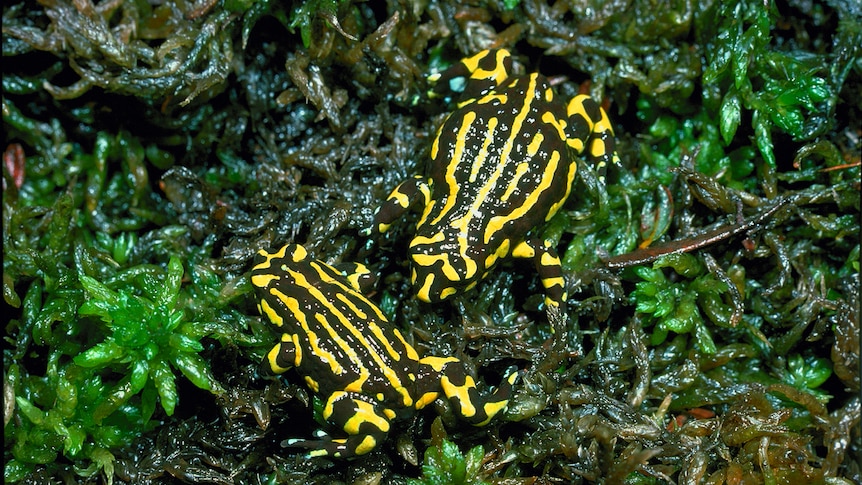By Jess Scully
More than 500 critically endangered frogs have been released into the Brindabella National Park in New South Wales.
Fewer than 1,200 mature northern corroboree frogs are estimated to remain in the wild.
The 544 juveniles – the largest cohort to be released – were bred at the Taronga Conservation Society.
Del Leong of Taronga Zoo Sydney is smitten with the alpine amphibians.
“They’re an absolutely gorgeous animal,” the herpetofauna zookeeper said.
The zoo worked with the NSW state government’s Saving Our Species program on the project.
“We’ve been able to breed, maintain and bump up the numbers,” Ms Leong said.
“Our last release was around 200 only.”
Ms Leong says she is excited but a little nervous about tracking the progress of the tiny frogs in the years to come.
“You know when your child leaves the coop? That’s what it basically feels like” she said.
Significant step forward
NSW Department of Climate Change, Environment, Energy and Water senior threatened species officer David Hunter said the release was a significant step towards repopulating the species in the national park.
“They’re replicating population level processes to ensure the persistence of that critically endangered northern Brindabella population,” he said.
Dr Hunter said the species had characteristics that differentiated it from other frogs, including that they were not as agile as others.
“[They’re] quite a small squat species with quite short limbs” he said.
“They can move kilometres, but they do this through this little crawling action.”
He said the species’ distinctive black and yellow stripes was a warning to would-be predators.
“We think their bright markings is actually to let other animals in the environment know that they’re quite toxic,” Dr Hunter said.
“They primarily eat ants in their diet and they utilise the alkaloids in the ants.
“They also synthesise their own alkaloids to put toxins in their skin.”
Dr Hunter said chytrid fungus, which was introduced into Australia in the 1970s, had crippled the wild population.
“It’s caused frog extinctions and declines globally and had a devastating impact on our frog fauna in Australia,” he said.
Dr Hunter said the frogs needed moist vegetation to breed and that pest control was vital.
“Some invasive species, like feral deer and feral pigs, if they’re not managed they’ll completely destroy the breeding habitat,” he said.
“They remove the critical vegetation and they basically turn what is a well-vegetated, moist environment into a muddy hole.”
